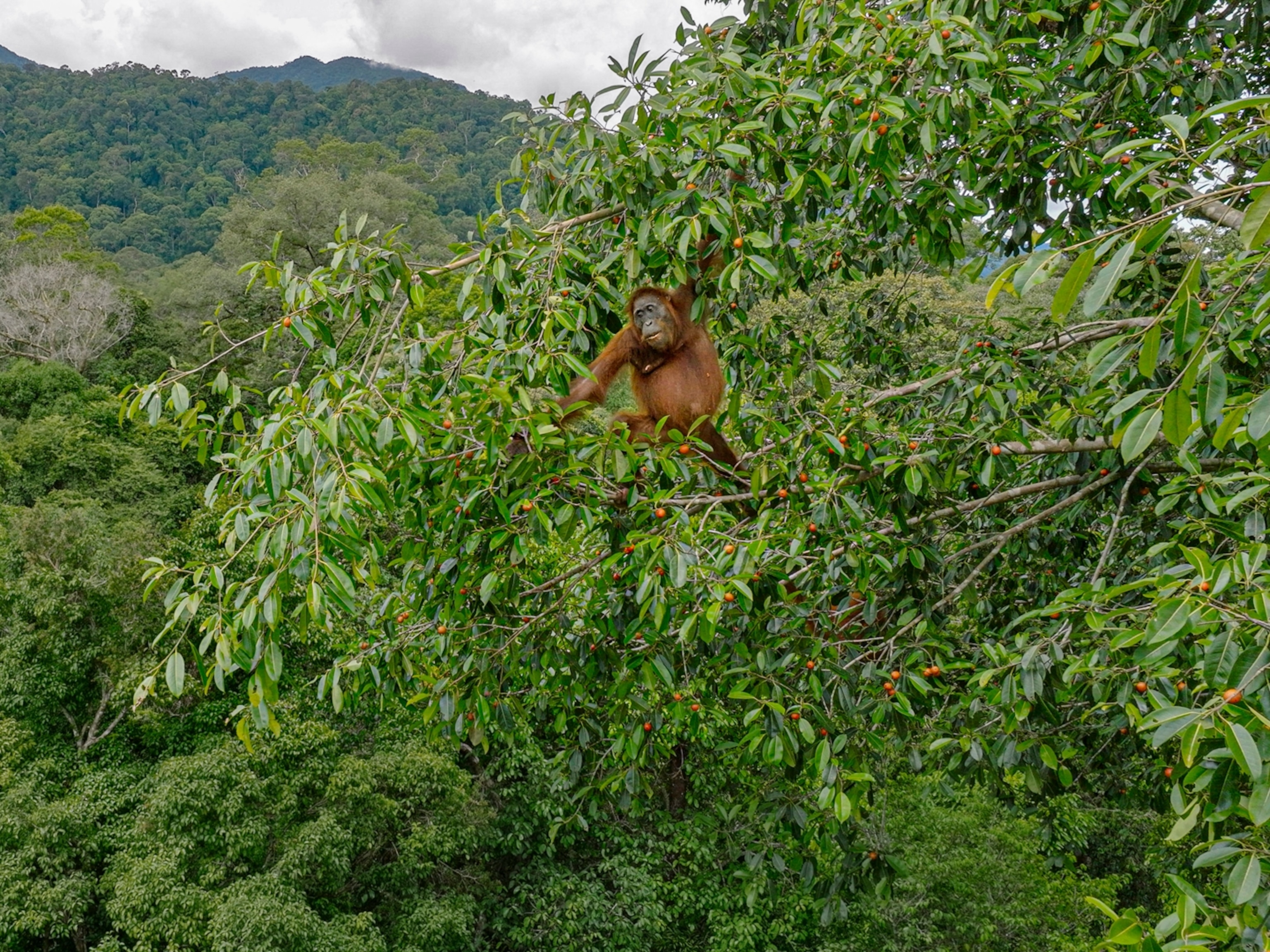
Inside the world of treehoppers, mini-marvels of the rainforest
These oddly-shaped insects have even stranger habits, like caring for their young and secretly communicating through inaudible vibrations.
If there were a competition for the world’s weirdest insect, treehoppers would have a clear shot at first place. See one for the first time and you’re sure to wonder: What are those strange protrusions sprouting from its body?
Many treehoppers flaunt outlandish outcroppings, such as the helicopter-like orbs of Bocydium sp. Others play it coy, mimicking thorns, leaves, or insect droppings. Still others impersonate ants or wasps. Forty-plus named species, as well as another 700 or so awaiting scientific description, resemble drops of rainwater.
Those singular shapes, insect anatomists explain, stem from the treehopper’s specially modified pronotum—a section of the thorax that in other insects resembles a small, shield-like plate. But treehoppers are the creative kids in their class, with their pronota arching into grotesque spires or globes, veritable billboards of their individuality.

As their common name suggests, these tiny insects—none are longer than a dime is wide—live on trees and plants worldwide, with nearly half the 3,200 or so described species inhabiting the New World tropics. One leaf in the Ecuadorian rainforest where this story was photographed could easily harbor more treehopper species than found in all of Europe.
Treehoppers are members of a huge and varied order of insects known as the Hemiptera, which include leafhoppers and cicadas. Like others of their kind, they’re equipped with mouthparts for piercing plant stems and slurping the juices inside. A bit like mosquitoes, they have two interlocking, needlelike feeding tubes, one for siphoning fluids, the other for secreting saliva that prevents the juices from coagulating.

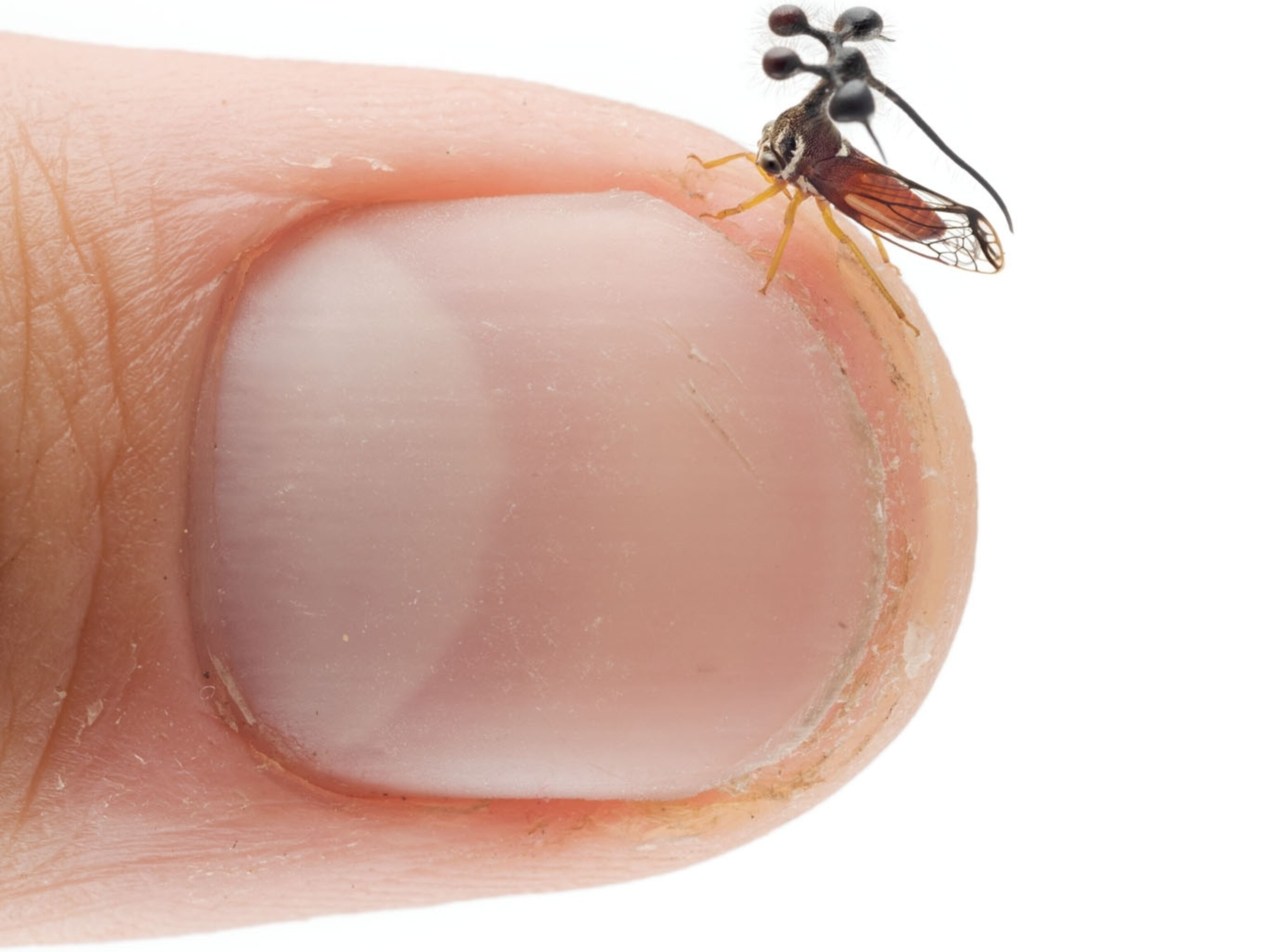
Because they’re often content to feast on one plant’s bounty their entire life, most treehoppers pose little threat to economically important crops (though they may spread at least one botanical disease). Partly for this reason, treehoppers haven’t been studied as extensively as their close relatives. This lack of scientific attention has left significant gaps in our knowledge of these bugs, including the purpose of their mystifying body modifications.
It’s a good bet that those pronounced pronota help protect treehoppers from predators. Spines and barbs warn that they might be tough to swallow, and bright colors advertise toxins within. Mimicry—the art of appearing to be something else—also plays a defensive role. The strange globes crowning Bocydium’s body resemble globs of Cordyceps, an insect-killing fungus common in rainforests.
Though the pronota are large, they’re also hollow and lightweight, allowing the insects to fly with surprising ease. Intriguingly, their pronota are wired with nerves and hairlike structures known as setae that receive unknown stimuli and may help the bugs sense their environment, says Stuart McKamey, a researcher with the U.S. Department of Agriculture’s Systematic Entomology Laboratory.
Spiky, thorny, tricky, sci-fi weird: Treehoppers come in countless shapes and colors.

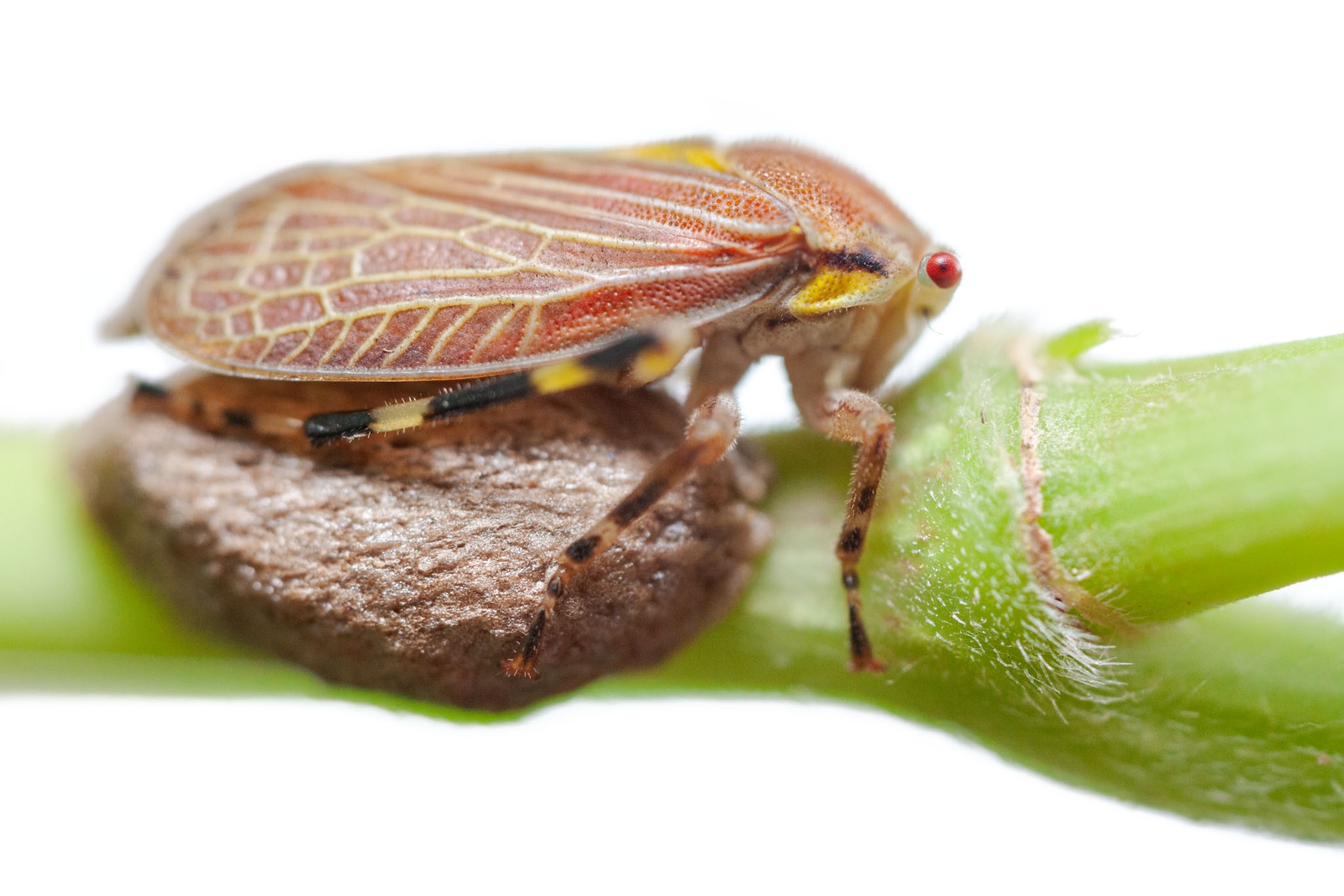

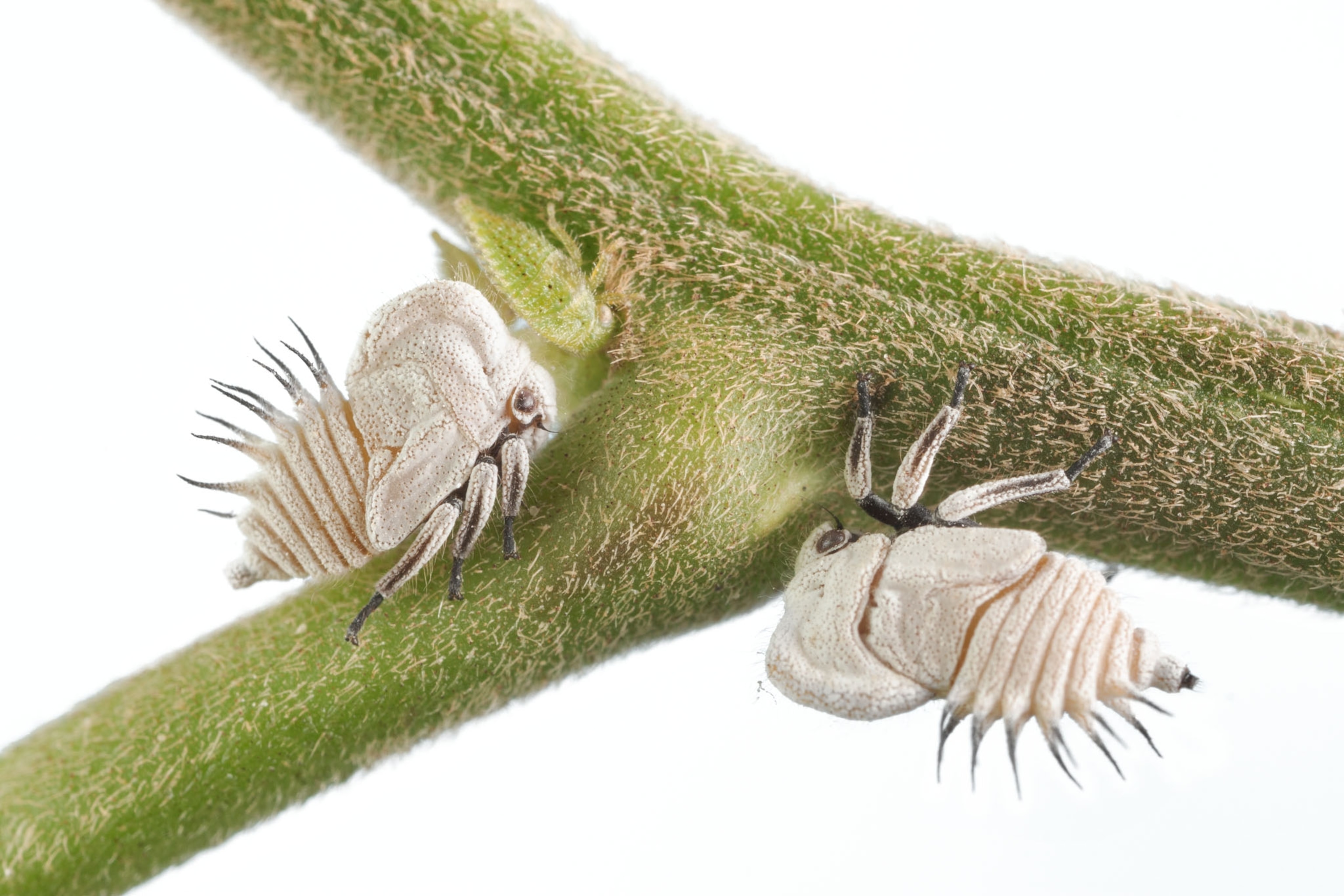

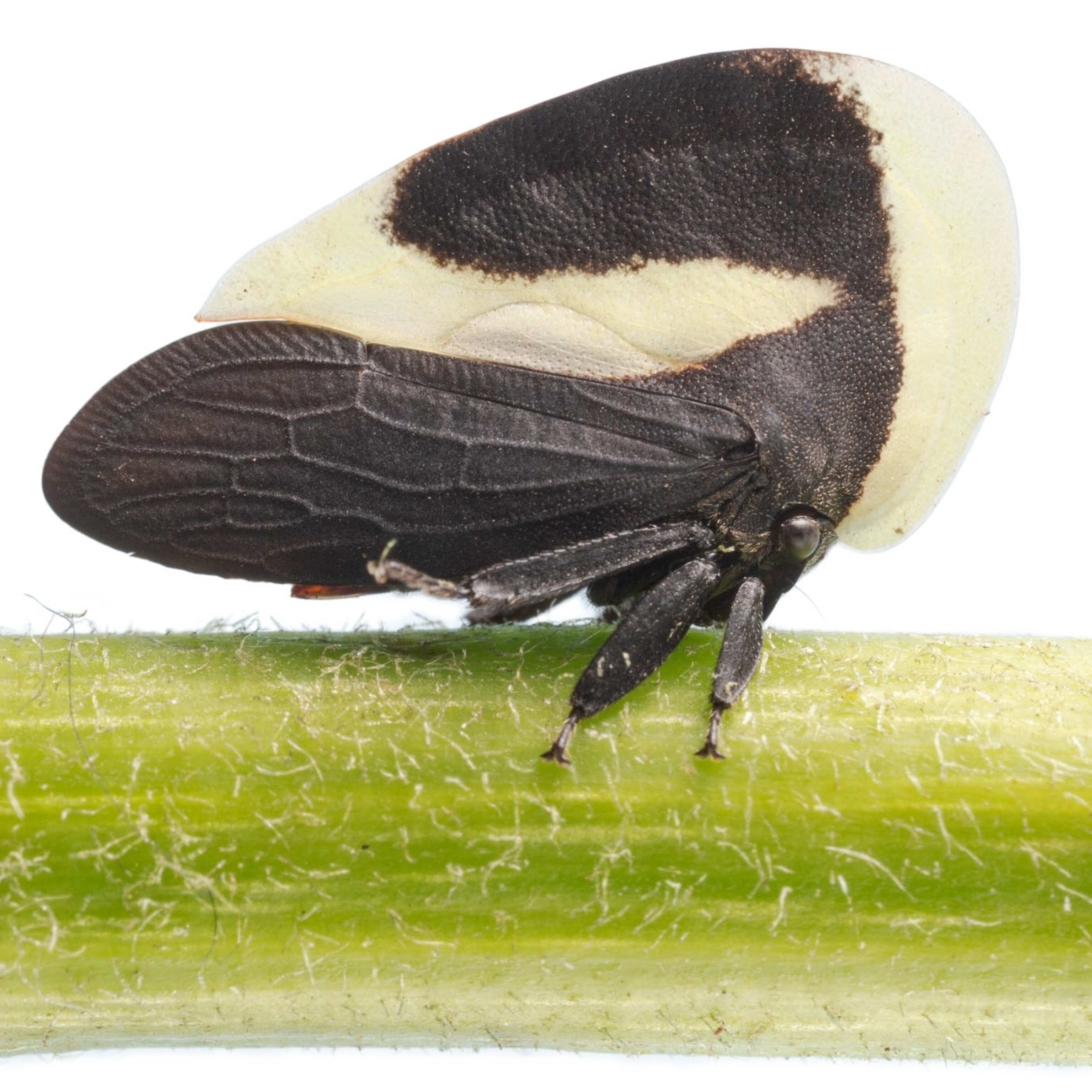

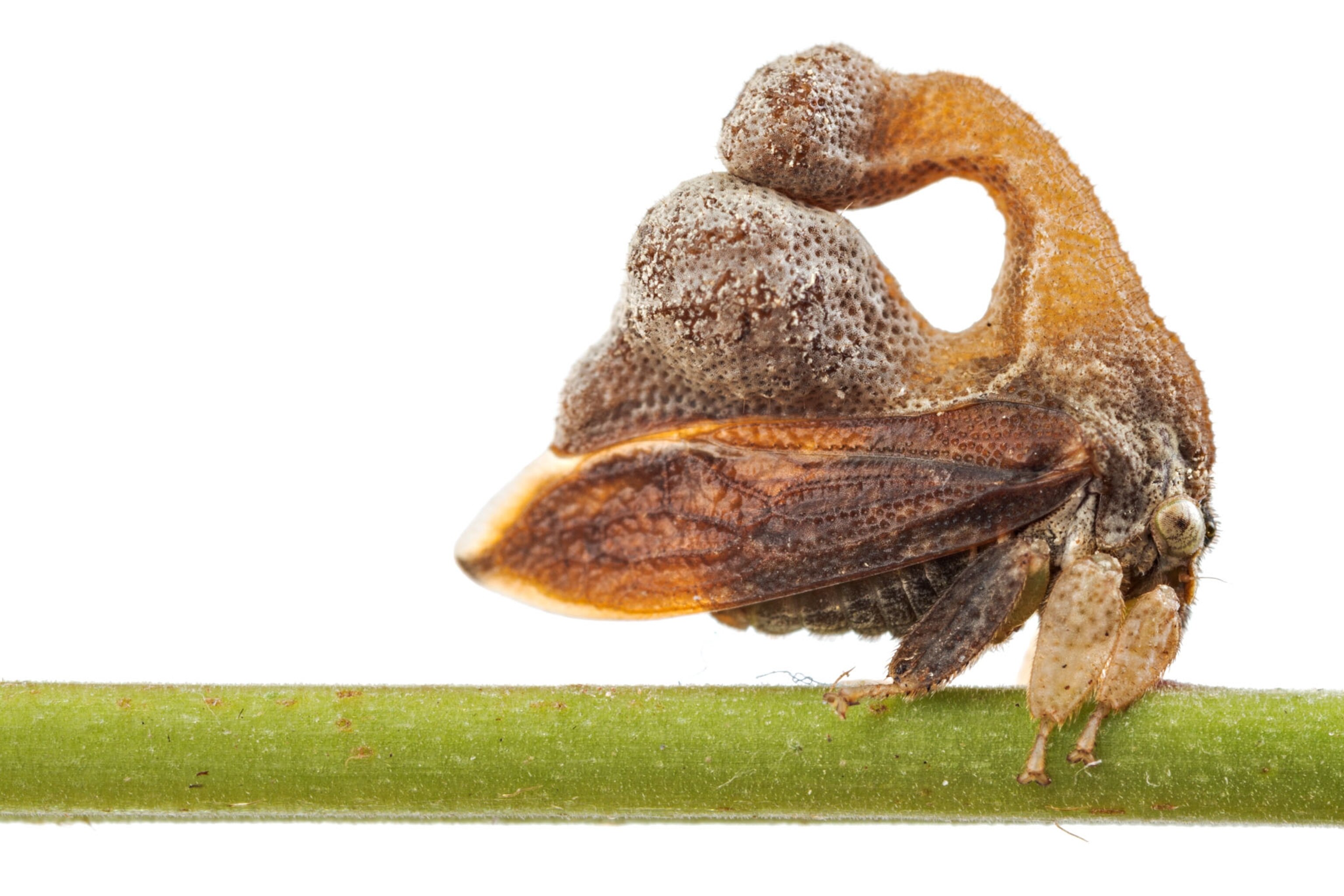







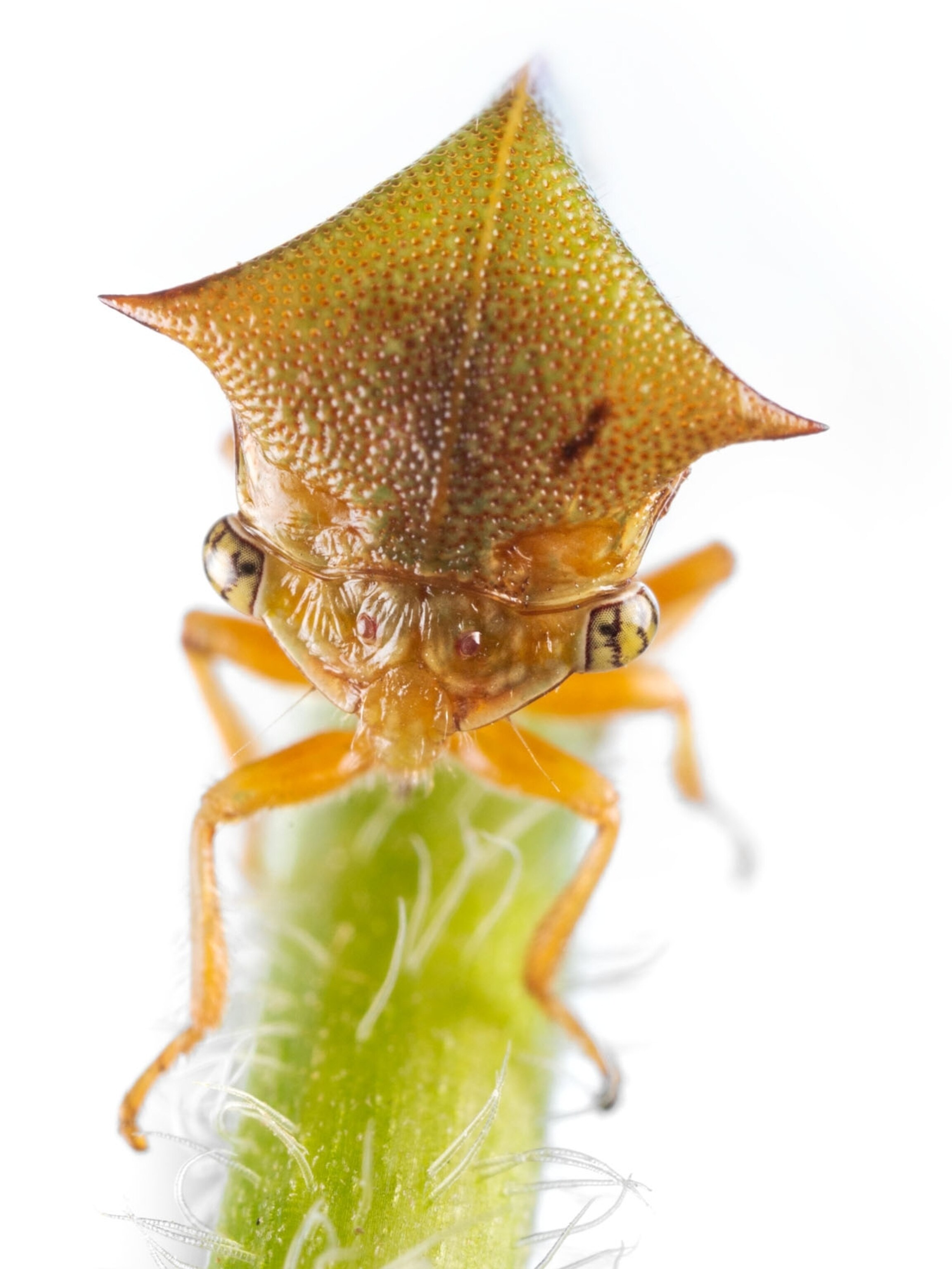



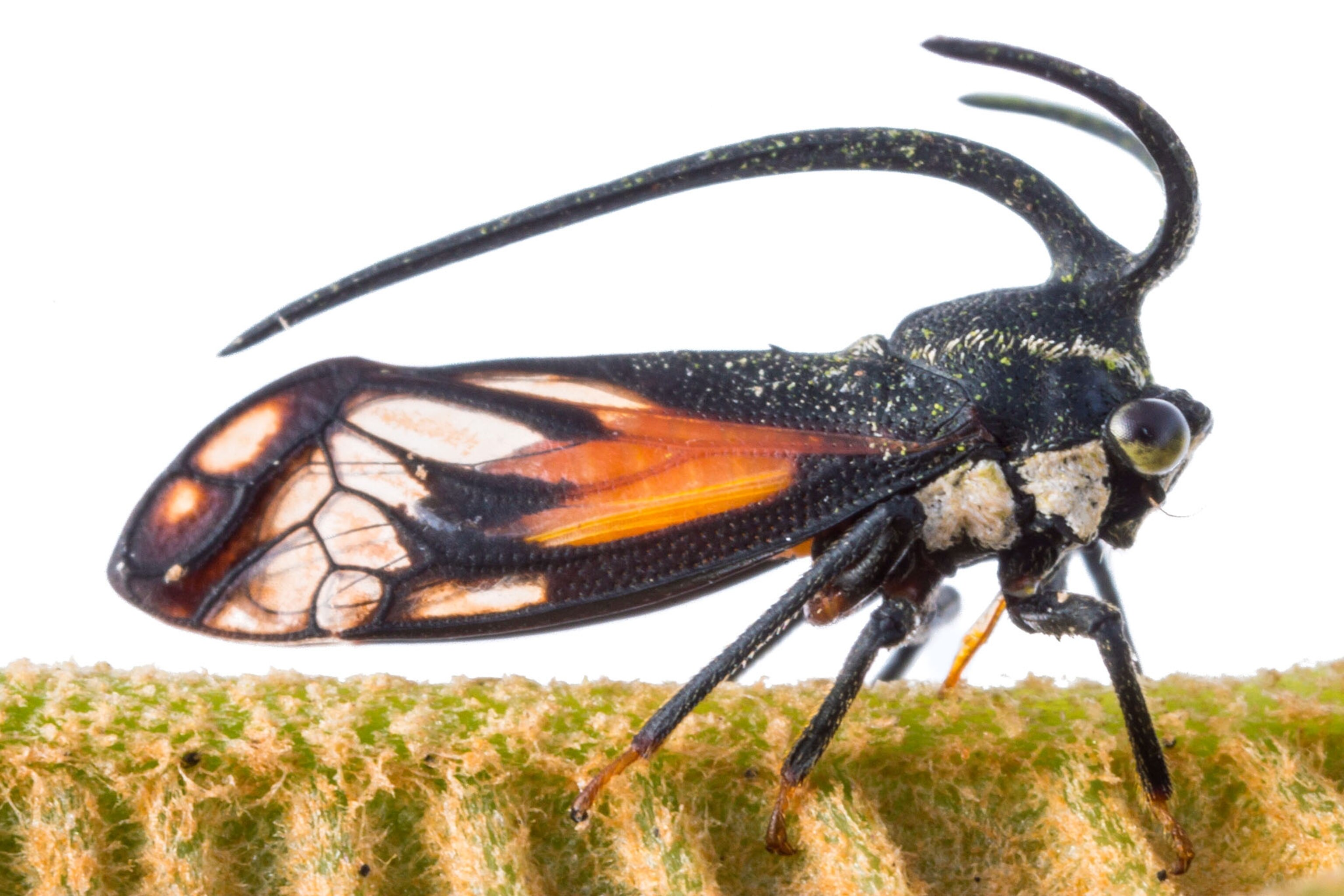

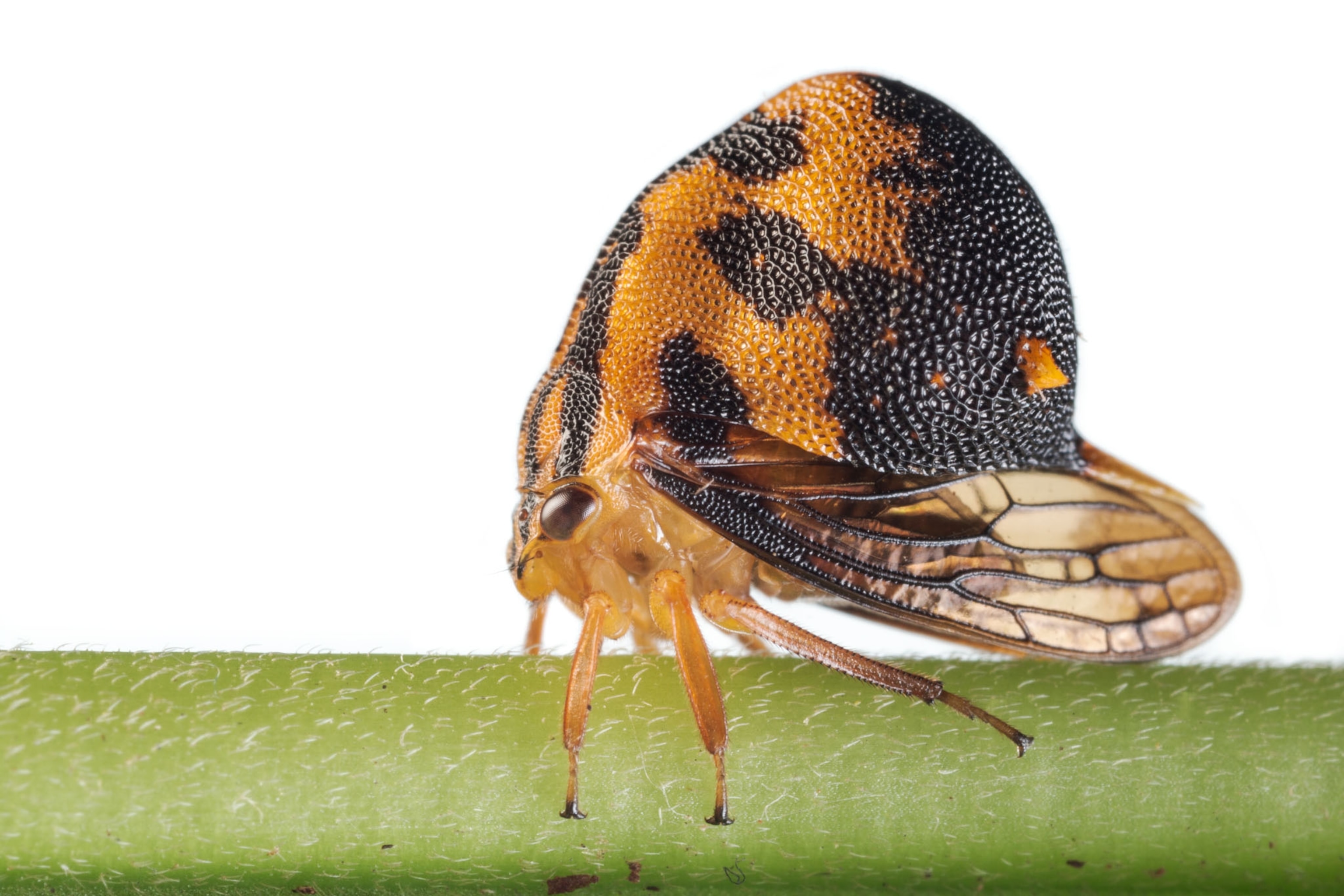


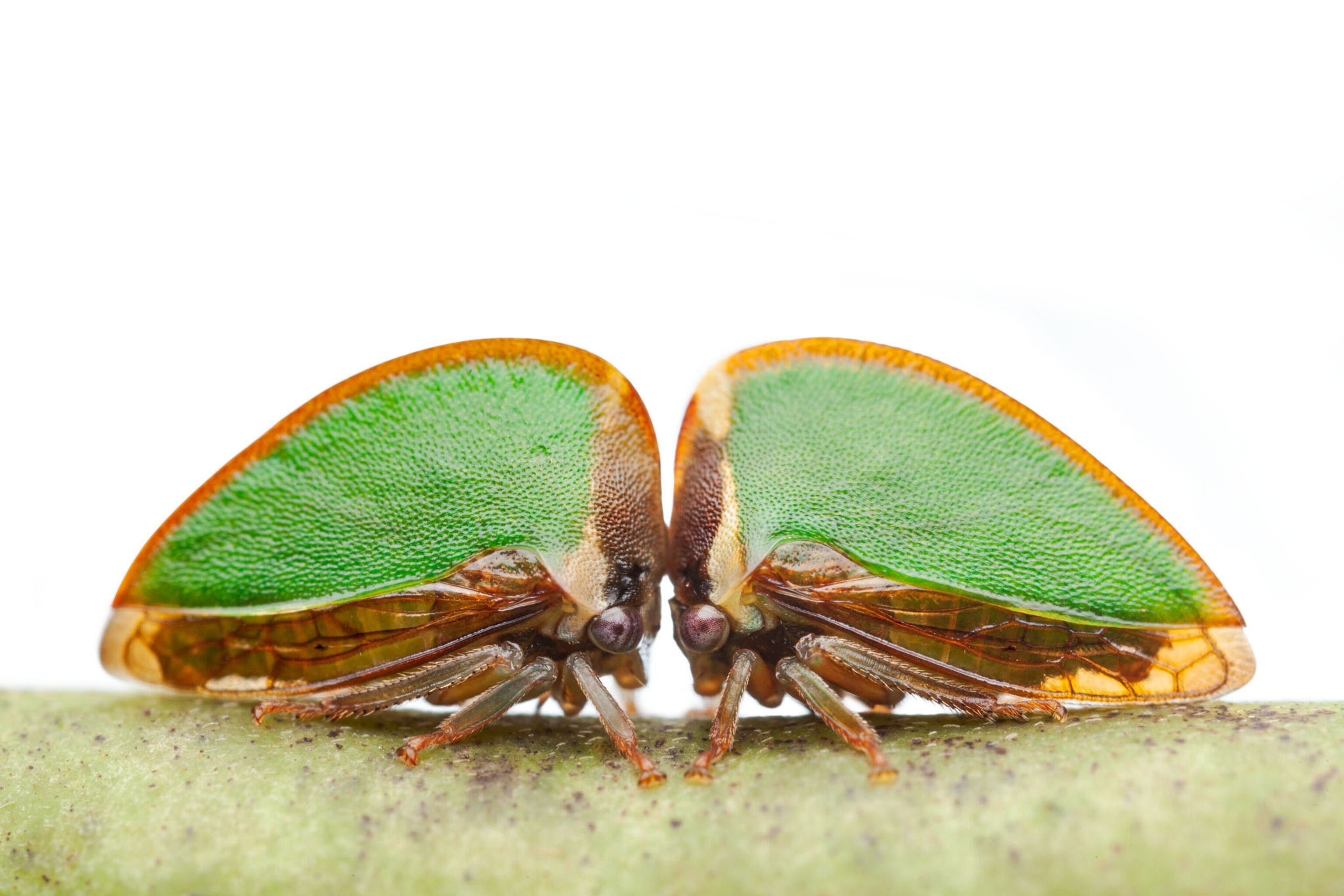
While it’s tantalizing to imagine what information treehoppers may glean with these receptors, their main mode of communication involves plant-borne vibrations. In contrast to their cicada cousins, which communicate by rubbing body parts together to produce shrill songs, treehoppers shake and jerk their bodies to send signals through plants, says Rex Cocroft, a researcher at the University of Missouri. Cocroft and other researchers record these vibrations with microphone-like devices that reveal a chorus of calls, clicks, chirps, and songs—none of which are audible to the human ear.
This ability to communicate with each other helps treehoppers defend their young. Unlike most insect mothers, which desert their eggs soon after laying them, many treehopper mothers remain present and vigilant, guarding their offspring until the nymphs grow up and fly away. When predators such as stinkbugs approach, the nearest nymph sounds the alarm by swinging its body and producing a vibrational “chirp.” Siblings pick up the vibe and join in, amplifying the signal. Springing into action, the mother confronts the invader, furiously buzzing her wings or punching with her club-shaped back legs.
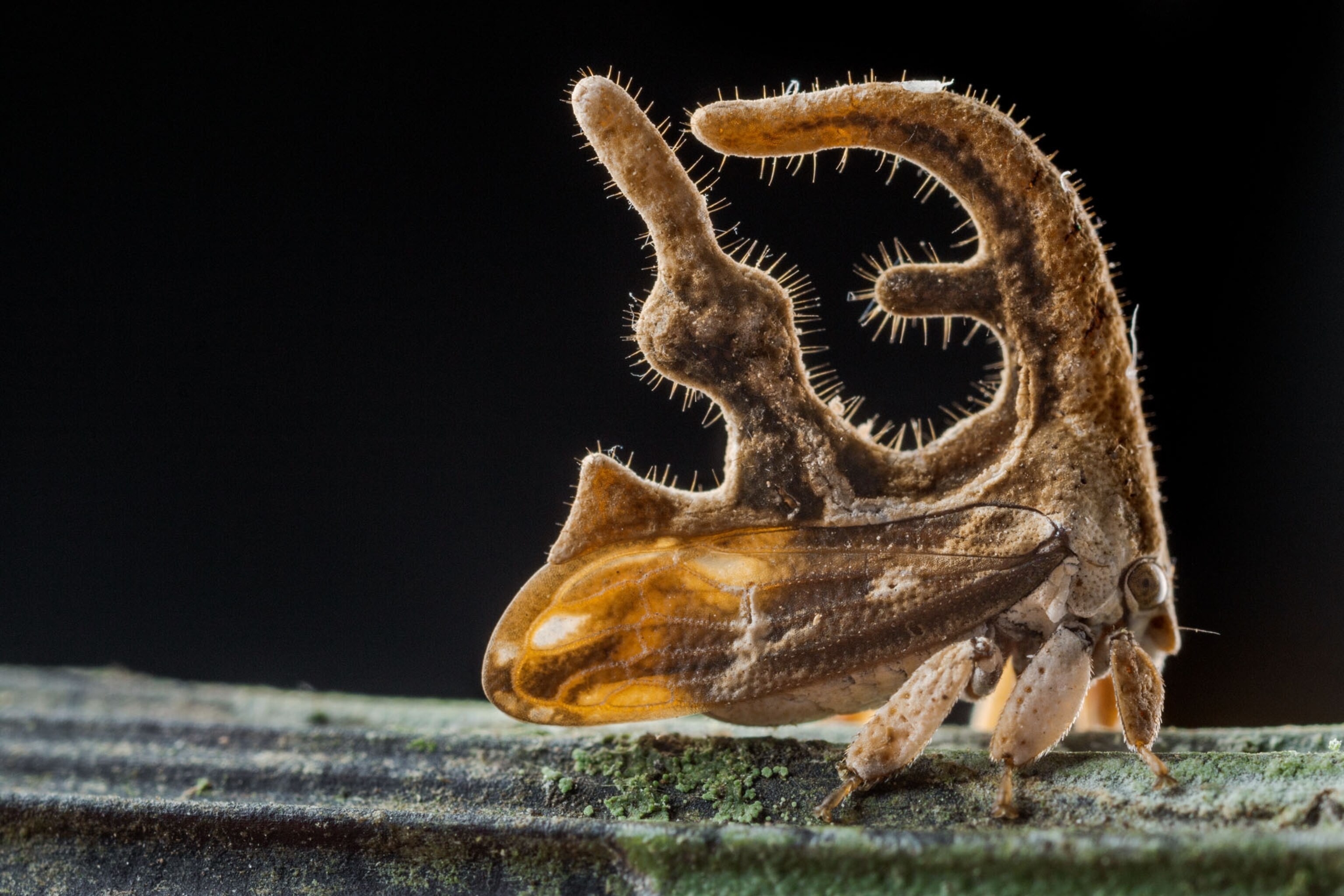
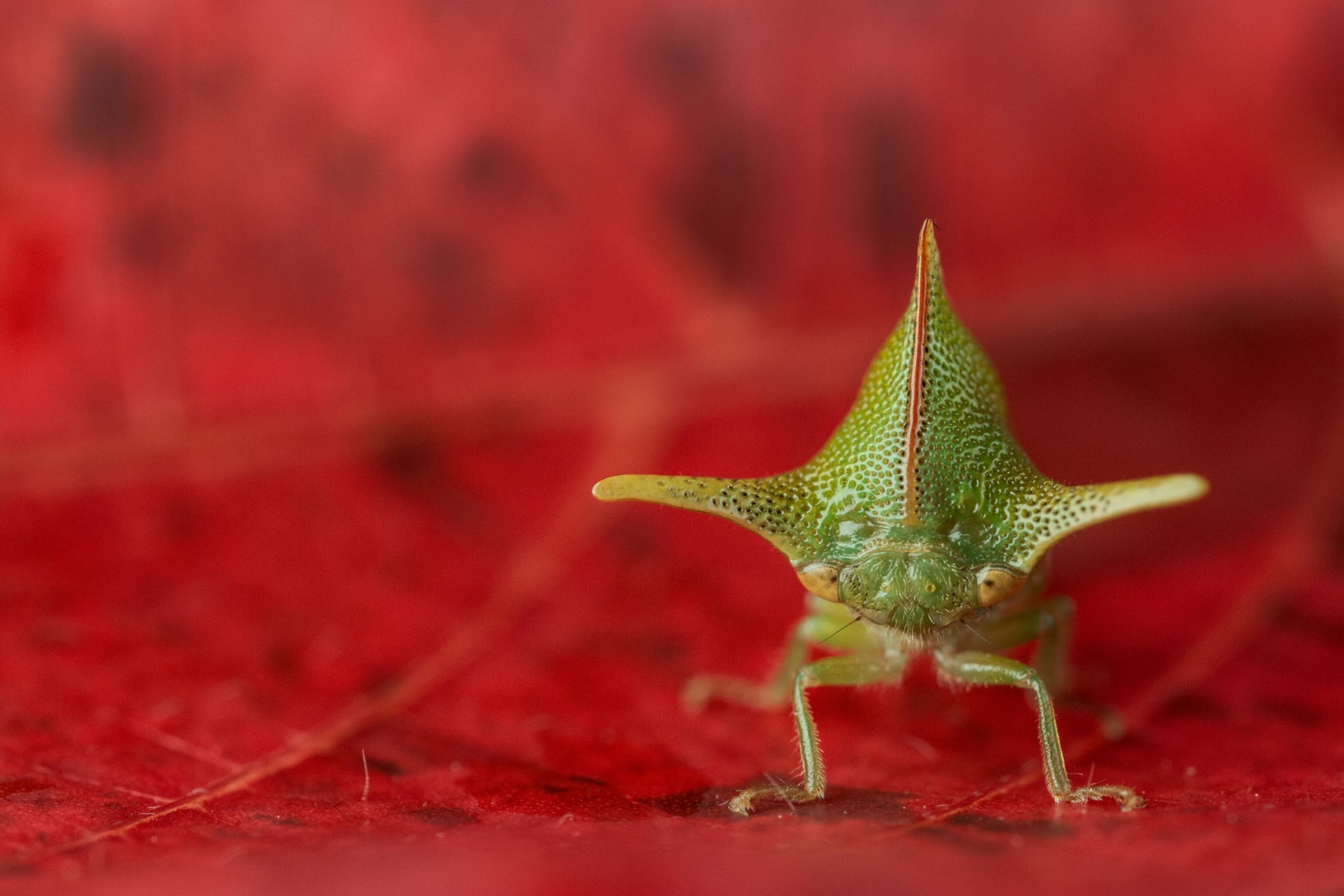
Sometimes treehoppers get help from ants and other insects that provide protection in exchange for honeydew, a sweet liquid treehoppers secrete as a product of constantly drawing plant sap.
Collecting treehoppers that have ant allies can be painful: “You’ll get dozens of stings on your hands,” says Chris Dietrich, curator of insects at the Illinois Natural History Survey. But the astonishing variety of these bizarre bugs makes for endless surprises.
“When you work with insects,” McKamey says, “it’s like Christmas every day.”
Related Topics
You May Also Like
Go Further
Animals
- Orangutan seen using plants to heal wound for first timeOrangutan seen using plants to heal wound for first time
- What La Palma's 'lava tubes' tell us about life on other planetsWhat La Palma's 'lava tubes' tell us about life on other planets
- This fungus turns cicadas into zombies who procreate—then dieThis fungus turns cicadas into zombies who procreate—then die
- How can we protect grizzlies from their biggest threat—trains?How can we protect grizzlies from their biggest threat—trains?
Environment
- What La Palma's 'lava tubes' tell us about life on other planetsWhat La Palma's 'lava tubes' tell us about life on other planets
- How fungi form ‘fairy rings’ and inspire superstitionsHow fungi form ‘fairy rings’ and inspire superstitions
- Your favorite foods may not taste the same in the future. Here's why.Your favorite foods may not taste the same in the future. Here's why.
- Are the Great Lakes the key to solving America’s emissions conundrum?Are the Great Lakes the key to solving America’s emissions conundrum?
- The world’s historic sites face climate change. Can Petra lead the way?The world’s historic sites face climate change. Can Petra lead the way?
History & Culture
- Meet the ruthless king who unified the Kingdom of Hawai'iMeet the ruthless king who unified the Kingdom of Hawai'i
- Hawaii's Lei Day is about so much more than flowersHawaii's Lei Day is about so much more than flowers
- When treasure hunters find artifacts, who gets to keep them?When treasure hunters find artifacts, who gets to keep them?
Science
- Why ovaries are so crucial to women’s health and longevityWhy ovaries are so crucial to women’s health and longevity
- Orangutan seen using plants to heal wound for first timeOrangutan seen using plants to heal wound for first time
Travel
- Why this unlikely UK destination should be on your radarWhy this unlikely UK destination should be on your radar
- A slow journey around the islands of southern VietnamA slow journey around the islands of southern Vietnam
- Is it possible to climb Mount Everest responsibly?Is it possible to climb Mount Everest responsibly?
- 5 of Uganda’s most magnificent national parks
- Paid Content
5 of Uganda’s most magnificent national parks
